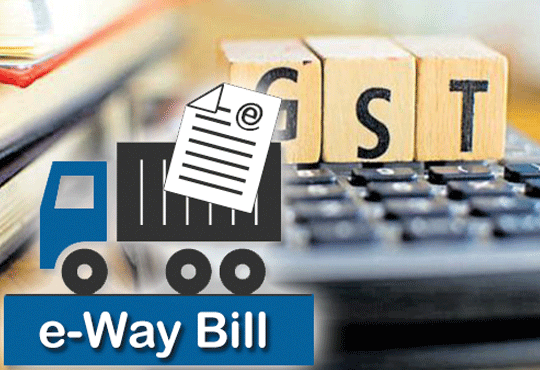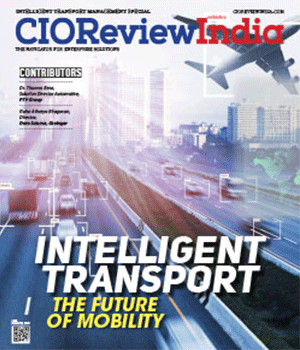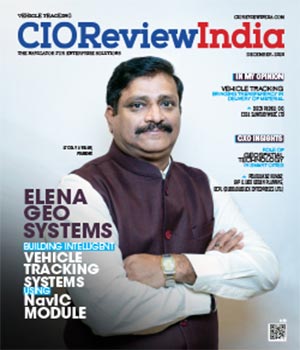The E-Way bill in Uttar Pradesh is little different
CIO Review Team | Monday, 26 March 2018, 10:59 IST
 In Erstwhile regime, for movement of goods, state wise time consuming and complicated compliances were required to be followed. Post implementation of GST, w.e.f 01.02.2018, a nationwide E-way Bill portal namely www.ewaybillgst.gov.in is introduced in case of inter state movement of goods and the same will be uniformly used by all the states for intra state movement of goods also by 01.06.2018. More than 15 States have already notified the said portal to be used for intra state movement of goods from 01.02.2018 itself. But owing to technical glitches faced on the common portal for generation of Eway bill on 1st February 2018,the eway bill for Interstate movement of goods was forced to be deferred for a certain period to revamp from the technical issues surrounding the e waybill mechanism and it was decided to reinstate the eway bill back into the system from 1st of April 2018.
In Erstwhile regime, for movement of goods, state wise time consuming and complicated compliances were required to be followed. Post implementation of GST, w.e.f 01.02.2018, a nationwide E-way Bill portal namely www.ewaybillgst.gov.in is introduced in case of inter state movement of goods and the same will be uniformly used by all the states for intra state movement of goods also by 01.06.2018. More than 15 States have already notified the said portal to be used for intra state movement of goods from 01.02.2018 itself. But owing to technical glitches faced on the common portal for generation of Eway bill on 1st February 2018,the eway bill for Interstate movement of goods was forced to be deferred for a certain period to revamp from the technical issues surrounding the e waybill mechanism and it was decided to reinstate the eway bill back into the system from 1st of April 2018.
So what is an Eway bill under GST : Eway bill is nothing but a piece of information to be furnished prior to commencement of movement of goods and generation of e-way bill- (1) Every registered person who causes movement of goods of consignment value exceeding fifty thousand rupees-
- in relation to a supply; or
- for reasons other than supply; or
- due to inward supply from an unregistered person,
And such registered person shall, before commencement of such movement, furnish information relating to the said goods as specified in Part A of FORM GST EWB-01, electronically, on the common portal along with such other information as may be required at the common portal and a unique number will be generated on the said portal.
How is an Ewaybill of Uttar Pradesh different from the Unified GST Eway bill for Interstate movement of goods or for the case from the Intra State movement of goods of respective state governments : It was not easy task for each states to implement Eway bill system of their own for intra-state movement of goods where few states designed the eway bill portal of their own to make it available on trail run basis. And there’s were also states which deferred the Eway bill for a indefinite period like the state of Rajasthan. In the case of Uttar Pradesh as well the government jeopardized the confidence that people had on the GST law by n0t clearly detailing about the eway bill mechanism, it’s applicability for generation for commuting of goods in and outside the State.
In this regard one should firstly know that e waybill in Uttar Pradesh is called by the name e sancharan and not as Ewaybill which is widely used by all the other states across India post implementation of GST E waybill. The e sancharan concept in Uttar Pradesh is nothing but a carry over of a concept from Uttar Pradesh State VAT law for movement of goods within the state. It was there in the earlier VAT regime of Uttar Pradesh to track the movement of goods into the State from outside the State.
An overview of e sancharan Form : The law regarding this generation of E sancharan Form dates back to Old VAT regime where in, a VAT registered dealer had to fill up manually Form XXXVIII and submit it to Jurisdictional officer of the circle in which the business falls in. This Form had to be submitted in triplicate by the VAT registered dealer marking two copies for the transporter and the transporter of conveyance had to carry these two copies whenever goods entered into or moved outside the state of Uttar Pradesh.
And for unregistered dealer making purchase from other state, the UPVAT laws had Form XXXIX, where in the unregistered person causing inward movement of goods was asked to manually fill and submit this Form to Assistant Commissioner and sent the signed form to the seller in both the original and duplicate copy to enable the person-in-charge of the conveyance carrying goods and coming into the State of Uttar Pradesh from any place outside the State or vice-versa.
And for sale of goods within the state there were no Forms prescribed under UPVAT laws. But with GST Ewaybill the system has changed but still Uttar Pradesh government has borrowed the concept of old VAT regime with little construction for Eway bill. We call it as reformed e sancharan system.
Does this reformed e sancharan system has the soul of GST Eway bill : In the state of Uttar Pradesh still today the system of E sancharan continues till date the system for Unified E way bill for generation of way bills for movement of goods between the states begins it footing in a full phased manner.
But as of now, the commercial tax department of Uttar Pradesh has prescribed one or more of the following documents/certificates:
- TDF- Transit declaration form (ePargaman prapatra) for Goods of other States that pass through UP while in transit.
- E-Way Bill-01 (Import declaration form) for heavy vehicles transporting goods from other States into Uttar Pradesh for delivery .
- E-Way Bill-02 (Transport memo) for Movement of Goods from UP to any other State or for movement of goods within the State between two cities in UP.
- E-Way Bill-03 declaration form for movement of Goods by e-commerce operators within UP.
How does the reformed system of E sancharan helps for the movement of goods or how does it works for the motive of successful generation of GST Ewaybill : Every heavy vehicle, passing through UP, is required to generate transit form in TDF-1, while entering UP, and utilize it using TDF-2 form while leaving UP. TDF-2 has to be generated within 24 hours of the vehicle exiting UP. Transit module begins with registration of the vehicle, followed by user login, TDF Generation, change transit vehicle, add transporter, change the password, change vehicle owner, respectively.
- How to generate TDF entry Form 1 : First of all, User needs to generate TDF, while entering UP. A user needs to provide information, relevant to goods, departure place, destination place etc., while entering UP boundaries. After filling all the relevant data, a user needs to take the print of generated sheet, and carry it while traveling in UP. Transporter needs to carry it while traveling in UP, for verification at any point in time.
- How to prepare TDF Utilization Form 2 : TDF2 is used by a user, while leaving UP i.e., at time of exit, a user needs to utilize the TDF1, that he generated at a time of entering UP.
Validity of Eway bill TDF : Such Eway bill TDF generated remains valid for a period of four days from the date of generation of such TDF.
So the mechanism for generation of way bills is same but with slight difference in case of Uttar Pradesh. There by one must not confuse the terms used in E waybill generation with the e sancharan system and vice-versa. As these are little different from each other. In GST eway bill we don’t have TDF Form for movement of goods in transit crossing the state borders.
Being a registered person operating my business in the state of Uttar Pradesh, how do I register myself for Eway bill : Any GST registered user who wants to use this facility, has to register themselves on the portal filling details asked on the application window. If the user is unregistered under GST but had TIN number may register on the same portal using a different application window. But, in the case the goods being dealt with are Non-GST goods, the registered person has to use separate window for registration for Eway bill.
Different ways to generate eway bill in Uttar Pradesh : Presently, the commercial tax department of UP supports online generation and management of EWay bills. However, the TDF (transit forms) can be managed through SMS as well. The user has to send the either of following codes via SMS to 9935901889. For Example
- For Entry of goods within the State SMS: ctxup< space >tdf< space >< last 10 digit tdf serial no. >< space >1
- On Exit of goods from the state SMS : ctxup< space >tdf< space >< last 10 digit tdf serial no. >< space >2
[ctxup = Commercial tax Uttar Pradesh ; TDF = Transit Declaration Form ; TDF1 = Transit Form for vehicle passing through the state of Uttar Pradesh; TDF 2 = Form required while leaving the state of UP i.e. at time of exit to be used for the purpose of utilization of Form TDF1 generated at the time of entering UP]
As for now, people of UP who send goods outside the State of UP have to one-time register themselves on Eway bill NIC portal and start generating Eway bills from 1st April 2018*.For the movement of goods within the State of UP, people can generate Eway bills only after the State of UP notifies intra-state implementation in its official gazette. Meanwhile, you can try Tally.ERP 9 Release 6.4 the, intelligent solution designed to generate and manage your Eway bills helping you with an easy transition into the new system.
CIO Viewpoint
Empowering Women: Shaping the Future of Industry
By CIOTechOutlook Team
Scaling AI: Finding the right Biztech...
By Sujatha Gopal, CTO - Communications, Media & Information Services (CMI), Tata Consultancy services
Gen AI: Transforming Cloud Solutions for...
By Matt Yanchyshyn, VP - AWS Marketplace & Partner Services, AWS
CXO Insights
Looking Towards Operations Management: What...
By Dr. Vandana Sonwaney, Director, SIOM
Acceleration Of Digital Transformation
By Sudhakar Singh, Managing Editor
Decoding the Disruptive Impact of Smart...











.jpg)
.jpg)









